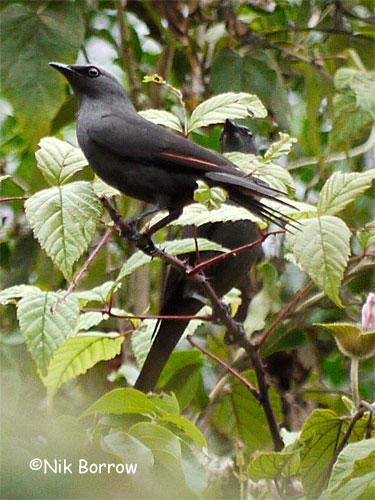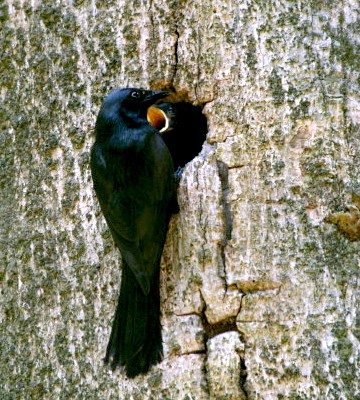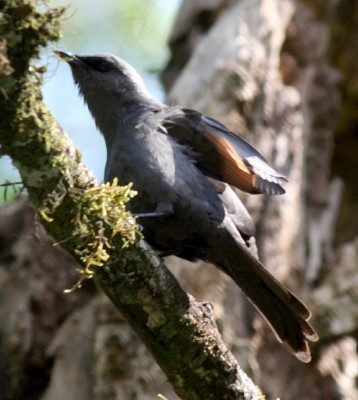
Poeoptera kenricki
SUBFAMILY
Sturninae
TAXONOMY
Paeoptera [sic] kenricki Shelley, 1894, Tanganyika. Sometimes
considered conspecific with Poeoptera stuhlmanni.
OTHER COMMON NAMES
French: Rufipenne de Kenrick; German: Kenrickstar; Spanish:
Estornino de Kenrick.
PHYSICAL CHARACTERISTICS
5.9 in (15 cm); weight 1.3–1.9 oz (38–54 g). Dark plumage
with dark brownish wings and olive-gray sheen. Bill and legs
black. Eyes yellow. Juvenile is similar to adult female, but
duller and more sooty on the body.
DISTRIBUTION
Disjunct populations in mountains of East Africa in central
Kenya and northeastern Tanzania.
HABITAT
Forest canopy in high rainfall areas.
BEHAVIOR
Endemic resident. Social, traveling in noisy flocks, but does
not join mixed-species flocks. Apparently nomadic, sometimes
visits isolated forest areas.
FEEDING ECOLOGY AND DIET
Primarily frugivorous; favors figs (Ficus); stays in forest canopy
to mid-canopy.
REPRODUCTIVE BIOLOGY
Cavity nester that uses old woodpecker or barbet holes; no details;
laying suggested to be mainly in October.
CONSERVATION STATUS
Not threatened.
SIGNIFICANCE TO HUMANS
None known.
Photo Gallery of - Kenrick’s starling




 Animalia Life
Animalia Life